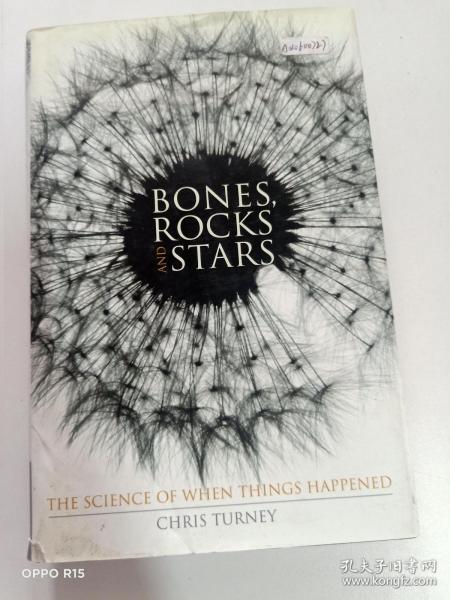骨头的英文是什么?
Bone: The Structural Marvel and Its Multifaceted Roles

In the realm of biological structures, bones stand as a testament to nature's ingenuity and precision. The word "bone," derived from the Old English "bon," has evolved over time to encapsulate our understanding of this vital component of the vertebrate skeletal system. Bones are not merely rigid structures that provide a framework for the body; they are living tissues that play crucial roles in various bodily functions. This exploration delves into the multifaceted aspects of bones, from their structural composition and mechanical properties to their involvement in essential physiological processes.

Structurally, bones are composed primarily of collagen fibers embedded within a calcium phosphate mineral matrix, primarily hydroxyapatite. This composition grants bones their remarkable strength and stiffness while maintaining a degree of flexibility and resilience. Collagen fibers act as a scaffolding, providing tensile strength, while the mineral matrix enhances compressive strength. Bones undergo constant remodeling through a process known as bone turnover, where osteoclasts resorb old bone tissue and osteoblasts lay down new bone. This dynamic process ensures that bones remain strong and resilient, adapting to changes in mechanical loads and metabolic demands.
Mechanically, bones serve as the primary load-bearing structures of the body. They support the weight of the body, facilitate movement through articulations with other bones, and protect vital organs from injury. The distribution of bone mass throughout the skeleton is carefully optimized to maximize mechanical efficiency and minimize energy consumption during locomotion. For instance, long bones like the femur and tibia are hollowed out to reduce weight while maintaining strength, a design principle reminiscent of engineering masterpieces.
Bones also play a crucial role in mineral homeostasis, particularly in the regulation of calcium and phosphate levels in the blood. These minerals are essential for numerous bodily functions, including nerve conduction, muscle contraction, and bone mineralization itself. When blood calcium levels drop, bones act as a reservoir, releasing calcium into the bloodstream to maintain homeostasis. Conversely, when calcium levels are high, bones吸收多余的钙,thereby regulating the systemic mineral balance. This regulatory role is mediated by hormones like parathyroid hormone (PTH), calcitriol (1,25-dihydroxyvitamin D3), and calcitonin, which coordinately regulate bone resorption and formation.
Beyond their structural and metabolic roles, bones are also central to hematopoiesis, the process of blood cell formation. Within the medullary cavity of long bones and the trabecular bone of flat bones, there are specialized tissues known as bone marrow. Red bone marrow, rich in hematopoietic stem cells, is responsible for producing red blood cells, white blood cells, and platelets. These blood cells are vital for oxygen transport, immune function, and hemostasis, respectively. The close proximity of hematopoietic tissues to the bloodstream ensures that newly formed blood cells can rapidly enter systemic circulation, fulfilling their physiological roles.
Moreover, bones serve as a reservoir for growth factors and cytokines, molecules that play crucial roles in cell signaling and immune modulation. These bioactive molecules are stored within the bone matrix and can be released into the circulation or local tissue milieu in response to injury or inflammation. For example, transforming growth factor-beta (TGF-β) and bone morphogenetic proteins (BMPs) are stored in bone and play important roles in bone repair and regeneration. Similarly, cytokines like interleukin-6 (IL-6) and tumor necrosis factor-alpha (TNF-α) can be released from bone in response to systemic inflammation, participating in the regulation of immune responses.
The skeletal system is also intricately involved in endocrine regulation. Bones are a significant source of sex hormones, particularly estrogen and androgen, which play crucial roles in reproductive function and bone metabolism. During menopause, the decline in ovarian estrogen production leads to accelerated bone loss and increased fracture risk, highlighting the importance of estrogens in bone health. Furthermore, bones produce other hormones like leptin and adiponectin, which regulate energy balance and insulin sensitivity, respectively. These endocrine functions underscore the integral role of bones in maintaining systemic homeostasis and metabolic health.
In addition to their physiological roles, bones are also important in human culture and medicine. Fossil records provide invaluable insights into the evolutionary history of our species and our ancestors. By studying the shape, size, and arrangement of fossil bones, paleontologists can reconstruct the lives and habitats of extinct organisms, filling in gaps in the fossil record. Similarly, forensic anthropologists use skeletal remains to identify individuals, estimate age at death, and investigate the causes of death, thereby aiding in criminal investigations and historical research.
In the field of medicine, bones are a focus of diagnosis and treatment for numerous conditions. Osteoporosis, a disease characterized by low bone mineral density and increased fracture risk, affects millions of people worldwide. Advances in imaging technologies like X-ray, computed tomography (CT), and magnetic resonance imaging (MRI) have revolutionized the diagnosis of bone diseases, enabling clinicians to detect fractures, tumors, and degenerative changes with unprecedented accuracy. Therapeutic interventions, including pharmacological treatments, physical therapy, and surgical procedures, aim to alleviate symptoms, prevent complications, and restore bone function.
Bone tissue engineering represents a promising frontier in regenerative medicine. By combining principles of biology and engineering, researchers are developing innovative strategies to repair and regenerate damaged bone tissue. These approaches include the use of scaffolds, growth factors, and stem cells to stimulate bone formation and healing. As our understanding of bone biology deepens, the potential for developing novel therapeutic strategies to treat bone diseases and injuries becomes increasingly promising.
Furthermore, bones play a pivotal role in biomechanics and sports science. The study of bone mechanics has led to the development of advanced materials and technologies that mimic the properties of bone tissue. These innovations have found applications in prosthetics, orthotics, and surgical implants, significantly improving the quality of life for individuals with musculoskeletal disorders. In sports science, the understanding of bone mechanics helps athletes optimize their performance and reduce the risk of injury. By incorporating principles of bone adaptation and loading, coaches and physical therapists can design training programs that enhance bone strength and resilience.
In conclusion, bones are remarkable structures that serve as the cornerstone of the vertebrate skeletal system. Their composition, mechanical properties, and multifaceted roles in physiological processes underscore their integral importance in maintaining systemic homeostasis and enabling human function. As we continue to unravel the mysteries of bone biology, the potential for developing innovative therapeutic strategies and technological advancements grows ever brighter. Bones, therefore, remain not just a structural marvel but a testament to the intricate interplay of form and function in nature.
- 上一篇: 红心大战游戏的玩法指南
- 下一篇: 轻松上手:魔方初学者必备玩法教程
-
 古文《狼》的现代文翻译是什么?资讯攻略12-01
古文《狼》的现代文翻译是什么?资讯攻略12-01 -
 骨折恢复时期应该吃什么好?资讯攻略12-03
骨折恢复时期应该吃什么好?资讯攻略12-03 -
 家常牛骨头汤的熬制秘籍资讯攻略12-05
家常牛骨头汤的熬制秘籍资讯攻略12-05 -
 家常纯牛骨头汤的完美制作秘籍资讯攻略12-05
家常纯牛骨头汤的完美制作秘籍资讯攻略12-05 -
 揭秘‘骨头镇’:如何高效补充生命值资讯攻略11-11
揭秘‘骨头镇’:如何高效补充生命值资讯攻略11-11 -
 骨头镇的“搜集”任务该怎么做?资讯攻略11-11
骨头镇的“搜集”任务该怎么做?资讯攻略11-11












